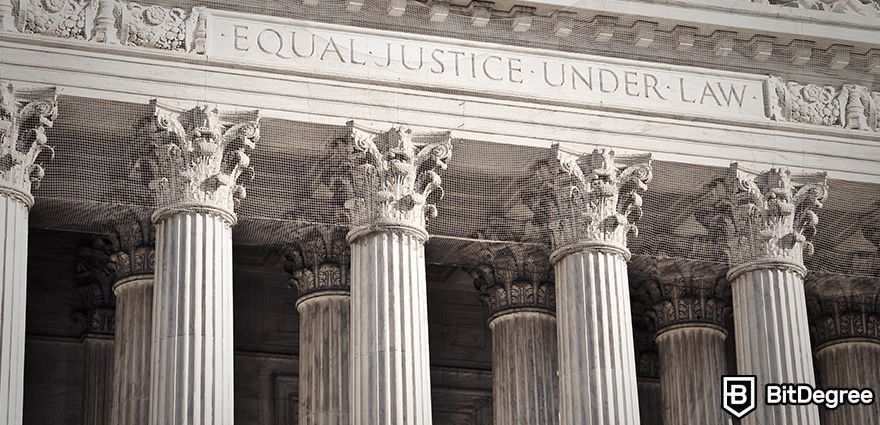The crypto industry presents a broad range of challenges on a global scale, but none has been as urgent and complex as the question of regulation. Nations and governments have responded to the concept of crypto regulation in numerous ways, from being incredibly relaxed to outright banning them. It's fair to say that there is no one standard or uniform method of regulation.
For those deeply entrenched in this industry, it can be easy to overlook that crypto and blockchain technology have only existed for approximately a decade and a half, making them still quite a new phenomenon. Their novelty implies that a lack of worldwide consensus is understandable at this stage. Not only this, but the fact that crypto was largely overlooked, and often dismissed by the media closer to its inception, means that many countries did not give the topic of regulation the serious consideration it warranted.
Despite this, it is a topic that raises many questions and dilemmas, with a wide array of ideas surfacing regarding it. Let's examine some of the dominant ideas and concepts that have emerged when it comes to the issue of regulation on a global scale, and delve into what precisely makes this so challenging to manage.
What Exactly is Regulation?
The term "regulation" is frequently used in discussions about crypto, but it's not often defined. Broadly speaking, to regulate something means to apply a certain structure and set of rules that dictate how it should function and operate. These can take the form of guidelines or laws. In the context of crypto, regulation is often used interchangeably with the latter. People tend to view legal action as the most defining and significant form of regulation.
To some extent, this view is fair, as rules that are enshrined in law are harder to break and can effectively keep people in check, provided penalties and reprimands are in place. However, regulations can also take other forms. Guidelines are a more lenient type of regulation, where a country, organization, or group of people formulate a set of rules they believe should be consistently followed.

Did you know?
Want to get smarter & wealthier with crypto?
Subscribe - We publish new crypto explainer videos every week!
What is Decentralized Crypto Gambling? (Animated Explainer)


Even with a less stringent form of regulation, penalties can exist, though they might only truly apply if the organizations and individuals who helped form them create deterrents for non-compliance. For example, if certain guidelines are breached, the individuals and projects responsible could be ostracized by other important figures and organizations in the same space. This happens on a personal and social level all the time, where friends and peers move away from certain people if they do something that is viewed as unacceptable in their eyes.
An instance of this might be if a crypto project was discovered to have misrepresented its degree of decentralization. These have been referred to by the US SEC as DINOs, or "Decentralized In Name Only" projects. If the crypto community collectively decided that such deception is unacceptable and harmful to the industry, they could collectively discourage it by choosing not to collaborate with that project or endorse it in any way. This form of regulation is much softer than laws, but it exists nonetheless.
There are other ways that regulations can form, but these are the two primary methods that have emerged over the lifespan of the crypto industry. Consider this a primer on them, as I will be delving deeper into these concepts to help illuminate the topic of global regulation.
The Regional Perspective
A significant point of contention in crypto regulation is the inherently global and decentralized nature of the industry, contrasted with the absence of a well-defined global legal system. Upon hearing this, many people's automatic reaction is to dismiss regional legal action as a viable approach. Undeniably, this dichotomy presents challenges and creates loopholes; however, it hasn't deterred countries from establishing regulatory laws.
Regional (or local) regulation is currently the primary method for regulating crypto. Countries have been developing their own laws, frameworks, committees, and positions on a wide array of crypto topics. The most well-known (and potentially notorious) organization doing this is the U.S. Securities and Exchange Commission (SEC). Given America's substantial influence on the global stage, its regulatory activities often echo worldwide – not necessarily by enacting laws elsewhere, but at least as a legal benchmark for other nations to monitor.
This endows the SEC with significant power in the Western world, where U.S. perspectives often guide actions in other countries under this sphere of influence. However, it's fair to say there is a broad spectrum of nations that march to the beat of their own drum, crafting their frameworks without significant external influence. China, Afghanistan, and Egypt serve as examples of countries that have established their own stringent laws on crypto, largely independent of U.S. policy.
It's beyond the scope of this article to delve into the specifics of how every country approaches crypto regulation. However, such an endeavor might not be crucial to our discussion, as the primary aim is to outline the ways regulation has come to exist. This concept can be condensed into the idea that the fate of the asset class should lie in the hands of each region, with each crafting its own decisions and laws.
This approach works well for most other industries, such as substance regulation and even weaponry. However, it does encounter difficulties with crypto due to its globally connected and decentralized nature. When an industry or concept is centralized, regional authorities can more effectively control and regulate it. However, due to the absence of a localized central point, crypto and blockchain technology are significantly harder to handle.

As a result, countries often concentrate on regulating companies operating within their borders and the individuals who interact with the technology. This strategy works relatively well for centralized companies using crypto, as they can be readily identified. However, individuals within a country are harder to locate and apply laws to. In the absence of legal uniformity globally, this situation allows for the emergence of crypto companies and projects in more relaxed jurisdictions to still impact individuals and residents elsewhere.
Even more concerning, globally dispersed projects can have their presence felt virtually anywhere. This strongly suggests that a regional approach to crypto regulation might not be the most effective strategy, even if it does offer substantial benefits, depending on the laws and how they are enforced. The inherent vagueness in this area is due to the fact that countries vary widely in their approach to regulation and enforcement, making it challenging to provide a precise overview.
The Global Perspective
A step above a regional regulatory perspective would be one that is global in nature. There is no such thing as "global laws", and for political, sociological, and cultural reasons, it would probably be impossible to establish them. A legal framework often reflects the individuals and leadership of a specific place, heavily intertwined with the lives and ideals of its people. The sheer diversity of lives lived on this planet, and their locations, make global laws logistically and perhaps even logically unattainable.
However, there are some ideals and principles that seem to transcend any nation or region. Typically, these fall under the concept of Human Rights. There is no clear or complete consensus on what all our human rights are, but there are some broad beliefs held by a significant number of people.
Many human rights listed in the UN's treaties and other human rights doctrines focus extensively on preventing harm to others. If a crypto project was found to be harmful, such as one actively scamming others (causing financial harm) or involved in the distribution of dangerous items (as Silk Road did), it is likely that no country would permit this. At least this is the case in theory. In practice, defining what counts as harm can be difficult and varies among different jurisdictions.
This forms the basis of an extremely loose, and very open-to-interpretation idea of global regulation – and it certainly exists today. It would be challenging to find a country that does not work to prevent scams and dangerous distributions of items, both of which can be linked to certain crypto projects. However, each nation has its own interpretation of what constitutes a scam and what exactly is a dangerous item. This once again leads us into the same quandary as regional regulation, where there is a distinct disconnect.
The challenge is further constricted by the complexity of crypto and blockchain technology, which can be difficult to understand for those creating laws, potentially limiting their ability to detect certain issues. This is especially true for scams rather than issues such as the distribution of items. A crypto scam can be difficult to identify for an untrained eye due to the rapid and diverse nature of the technology in this space. And this leads us to another form of regulation that needs to be discussed.
The Community Perspective
So far, my discussion has primarily focused on lawmaking as a regulatory instrument, but there's another approach. From its inception, there has been a push within crypto circles for the world to let the industry itself manage regulation. Rather than relying on governments or global institutions, many people argue that members of the crypto community should have the opportunity to handle matters themselves.
This is a type of community-level regulation, devoid of the rigidity of laws, but essentially still possessing significant power. The concept is that community members would actively work towards mitigating harm and establishing codes of conduct and guidelines that projects must follow. These could theoretically be written down, but there's potential for them to be more flexible.
Writing laws and guidelines are effective from a top-down perspective, where there's a centralized voice for everyone to follow. However, a community-led approach to regulation would fundamentally lack formal leadership (beyond potentially some thought leaders). Additionally, this type of regulation could quickly evolve alongside the technology itself.
The main advantage of this approach is its ability to reach all countries and affect projects that have no centralized location. Instead of being tied to a region, it is something ingrained in the minds of the community that builds the industry. This might sound idealistic, but in many ways, this is one of the methods the world already uses to regulate crypto – albeit in a sometimes subtle manner.
An example of this is when the pseudonymous creator of the SushiSwap decentralized exchange, Chef Nomi, sold $14 million worth of ETH collected from the service. Following significant backlash from the community, Chef Nomi issued an apology and returned the money. This occurred without the need for legal action, all within the confines of the community itself.
Another fascinating example on a broader scale is the industry's shift towards a more environmentally friendly stance. With Ethereum actively deciding to switch to Proof-of-Stake, meaning less electricity is used to add blocks to the chain, there has been a push for people to be more mindful of the networks they support. While laws do exist in some places to support the environment, the move to enforce and implement this is largely driven by the community and its builders.
This is unquestionably one way the world regulates crypto. Some people want this to be the only method, citing concerns that laws and legal frameworks hinder the space by misunderstanding it, but in truth, it doesn't have to be an either/or situation. Currently, we have community regulatory activity running parallel to regional regulation.
Conclusions
The world regulates crypto through a complex and intertwined web of laws from various countries and organizations, complemented by watchful communities that monitor the industry from within. Some might argue that one method is more effective than the other, or even that they inhibit each other, but the reality is that both exist and are capable of effecting change.
In the future, as the crypto industry matures, it's likely we'll see community regulation and legal regulation align more consistently. This is because, as adoption increases, so will lawmakers' understanding of the sector. If crypto becomes the norm in a more fundamental way than it currently is, then more lawmakers around the world will naturally become part of the community, triggering a greater synthesis and providing more benefits for the entire industry.






















